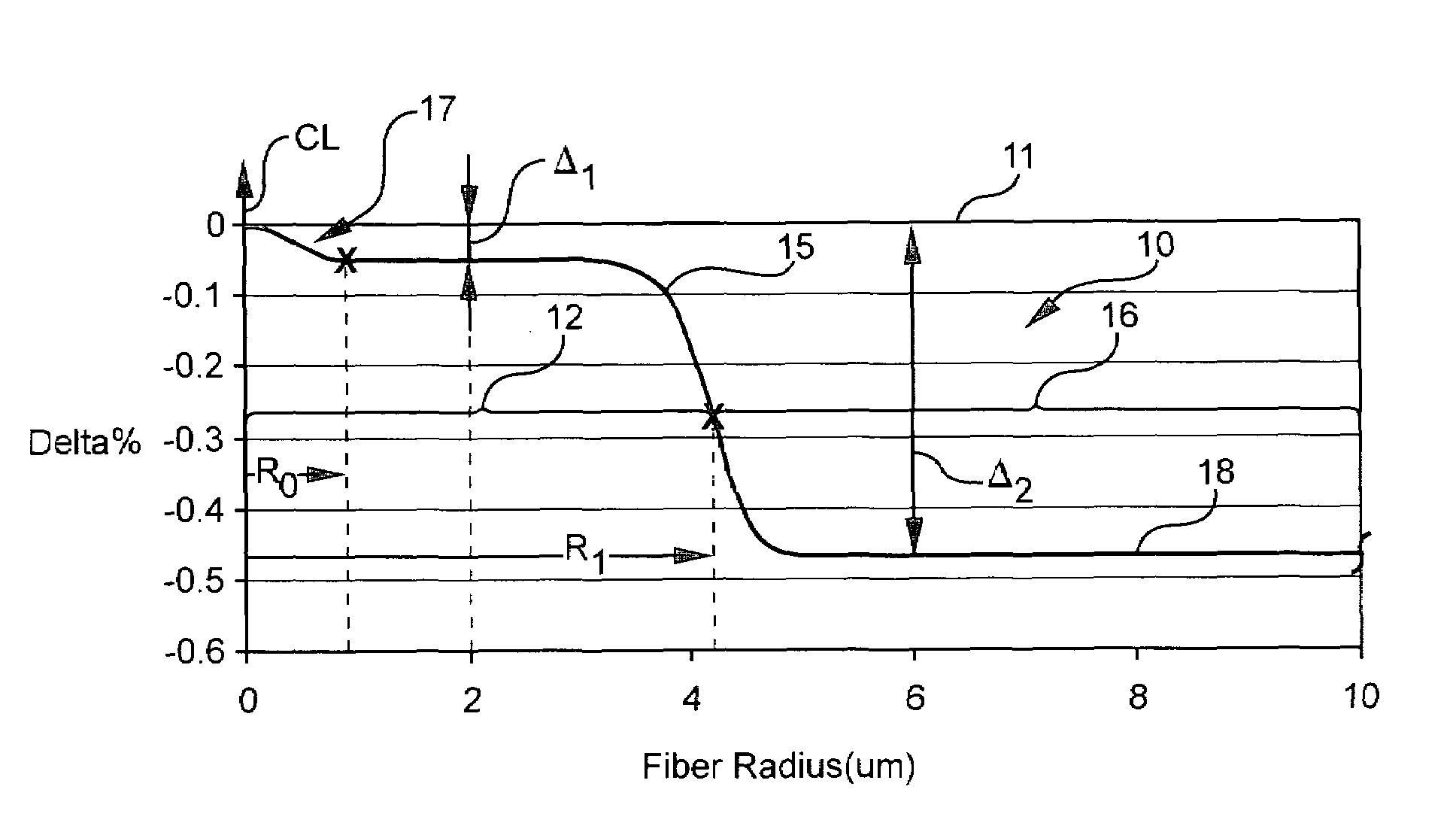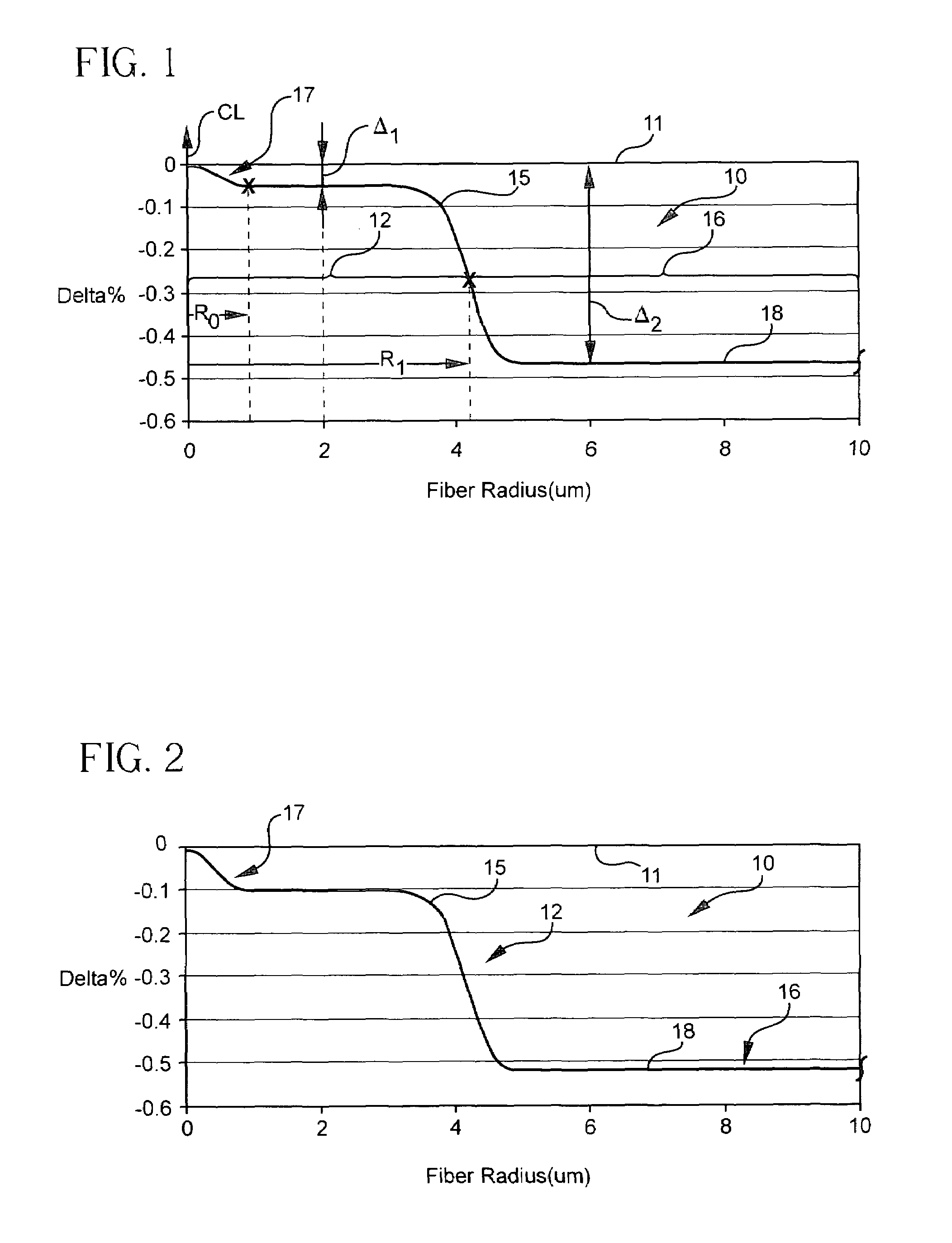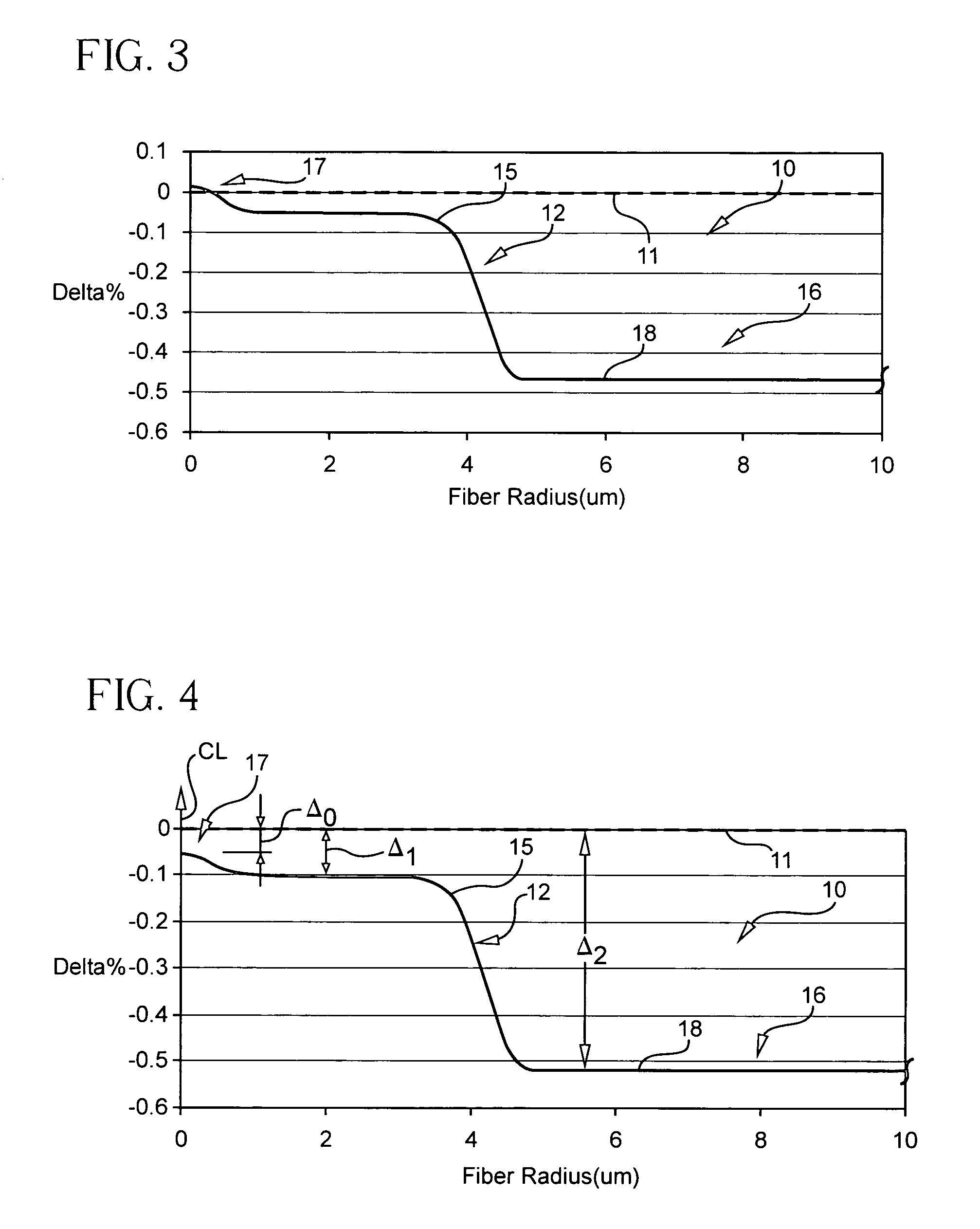Alkali and fluorine doped optical fiber
a technology of optical fibers and fluorine, applied in the field of low-loss, silica-containing optical fibers, can solve the problems of amplifiers representing a significant system cost and the principal limitation attribute of optical fibers, and achieve the effect of low attenuation
- Summary
- Abstract
- Description
- Claims
- Application Information
AI Technical Summary
Benefits of technology
Problems solved by technology
Method used
Image
Examples
manufactured examples
[0052]The following actual examples of the inventive fiber were manufactured as described above. The resultant optical fiber refractive index profiles for examples A and B are shown in FIGS. 20 and 21, respectively. A microprobe analysis of the optical fiber was made, and a plot of the dopant concentrations in the optical fiber as a function of radius is shown in FIG. 23, wherein curve 21 represents the concentration of K2O in wt. %, curve 23 represents the concentration of F in wt. %, and curve 25 represents the concentration of Cl in wt. %. The manufactured optical fiber examples exhibit the optical properties shown below.
[0053]
TABLE 3Optical Properties of Manufactured Fiber Examples (@ 1550 nm)Disp.Disp.SlopeMacro-LateralAttn.Ex.ps / nm / ps / nm / KappaMFDAeffbendLoaddB / #kmkm2nmμmμm2dB / mdB / mkmA18.10.05930711.497.821.91.160.170B18.10.0553289.873.30.010.200.173
PUM
| Property | Measurement | Unit |
|---|---|---|
| outer radius | aaaaa | aaaaa |
| outer radius | aaaaa | aaaaa |
| outer radius | aaaaa | aaaaa |
Abstract
Description
Claims
Application Information
 Login to View More
Login to View More - R&D
- Intellectual Property
- Life Sciences
- Materials
- Tech Scout
- Unparalleled Data Quality
- Higher Quality Content
- 60% Fewer Hallucinations
Browse by: Latest US Patents, China's latest patents, Technical Efficacy Thesaurus, Application Domain, Technology Topic, Popular Technical Reports.
© 2025 PatSnap. All rights reserved.Legal|Privacy policy|Modern Slavery Act Transparency Statement|Sitemap|About US| Contact US: help@patsnap.com



